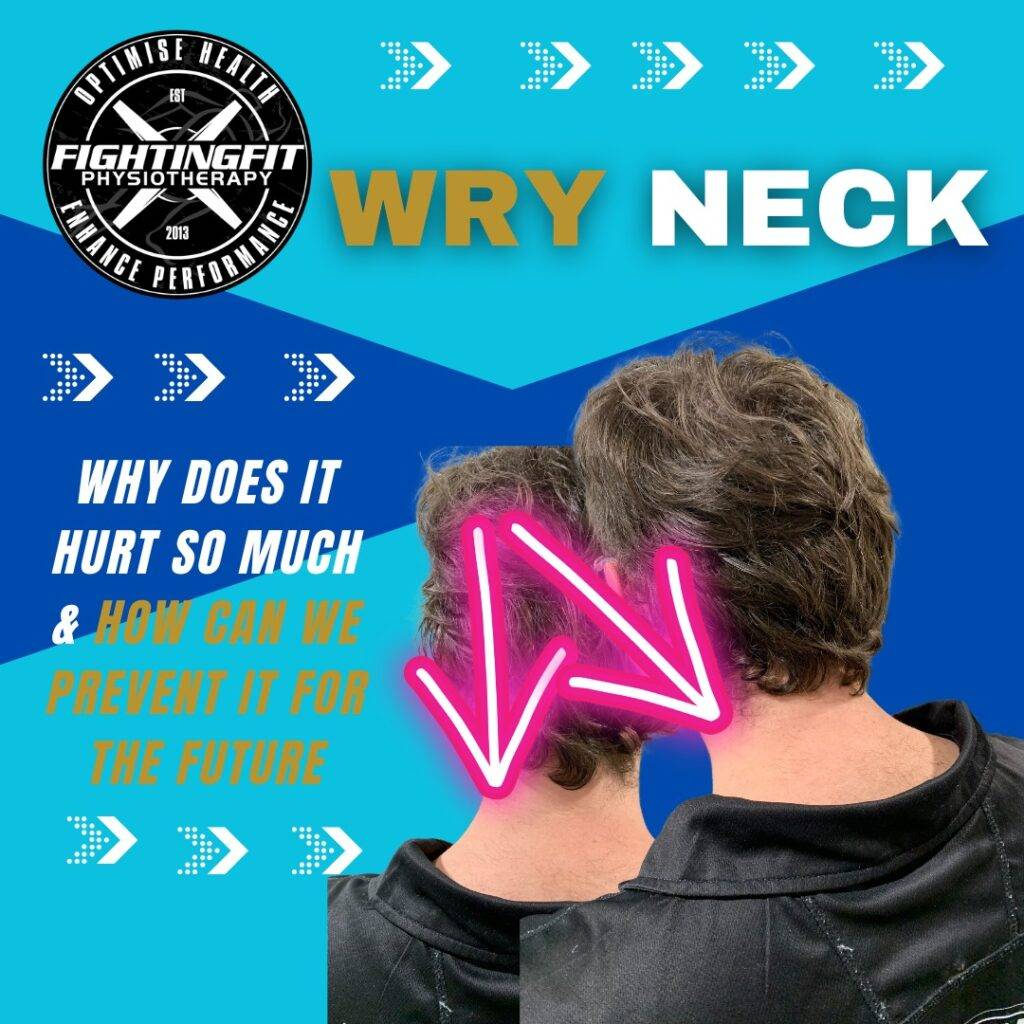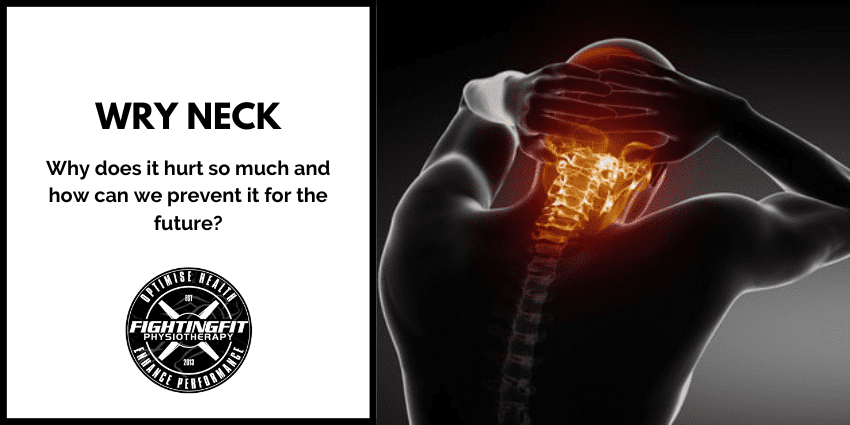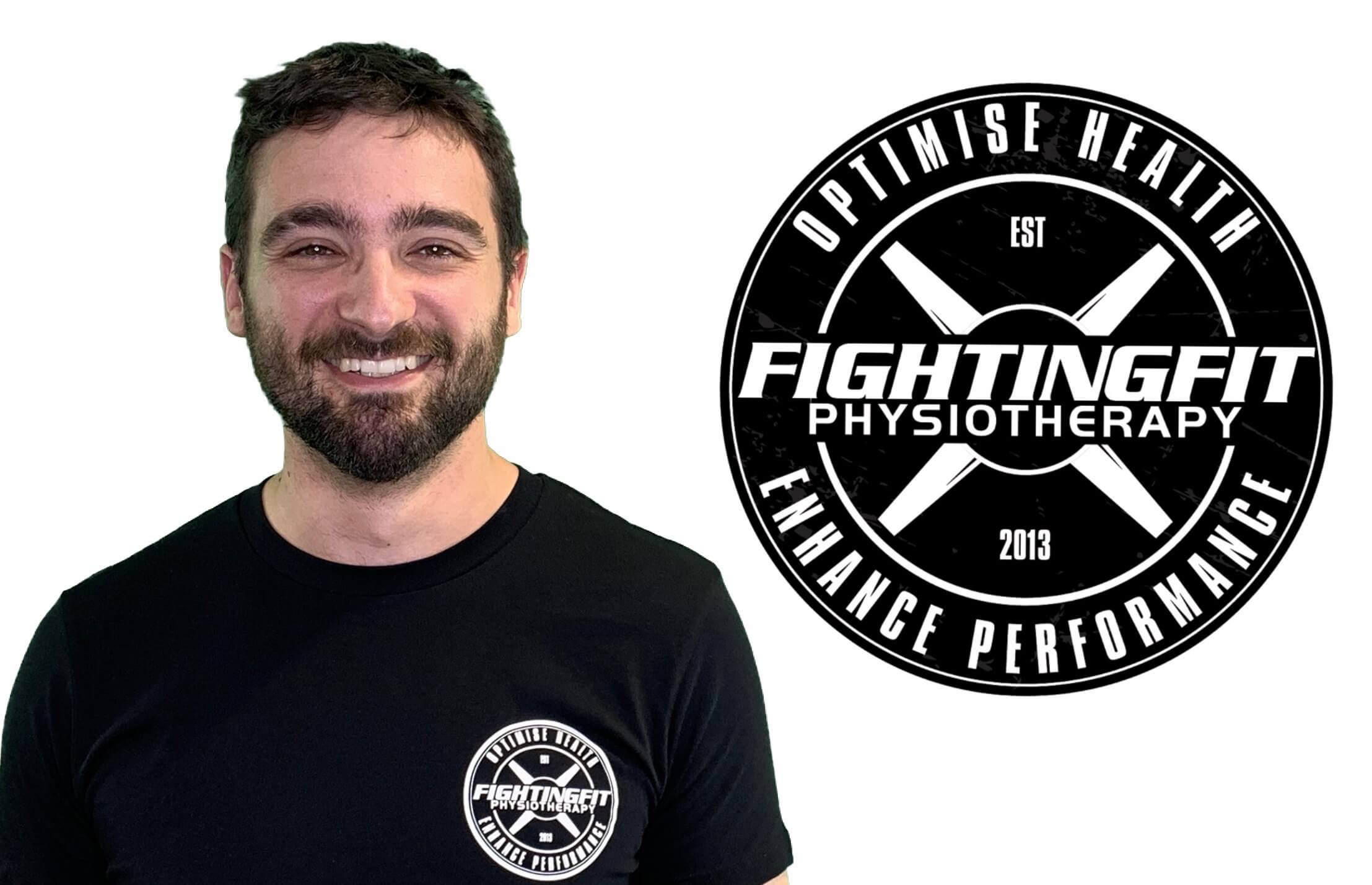Wry Neck
What is a Wry Neck?
Have you ever woken up in the morning, tried to move your neck and found that you have significantly restricted movement with loads of pain?
It is a common story for many people.
If you have experienced this chances are you are suffering from acute wry neck or what also be termed a torticollis.
Approximately 70% of Australia’s population will experience this condition in their lifetime, and it typically occurs in younger people between the ages of 12 and 30 years of age.
The pain and dysfunction caused by this condition can have different levels of severity. The good news is that this condition will typically resolve in a short period of time either on its own or quicker with treatment.

Common signs and symptoms of acute wry neck
Pain:
The onset in Acute wry neck will typically occur upon waking in the morning. The pain will be localised to the neck region, typically to one side and will not pass the shoulder or spread into the arm.
Reduced range of movement:
The movement of the neck will be significantly restricted, again usually to one side as this is a natural protective response by the body.
The reason this occurs, is that a joint will become stiff or what is typically reported by patients as “feeling like my neck is locked”.
As a result, the muscles around the joint and through the side of the neck will become tight, further reducing your movement.
The exact cause of wry neck is not completely understood. However, some of the common reported episodes are reported by patients as:
- Sleeping posture or poor pillow
- Inadequate work station ergonomics
- Weakness and poor endurance of the neck musculature
- Weakness and poor endurance of musculature surrounding the shoulder
- Sleeping with a cold breeze or air con blowing on them directly all night
- A past history of wry neck
As mentioned earlier, this condition will typically resolve quite quickly with treatment.
The best form of treatment is Physiotherapy. Yes, we maybe biased here, but our treatments are more effective when compared to things like manipulation, massage or some of the weird and wonderful things you can find on the internet for it.
How to treat a Wry Neck
At Fighting Fit, the first thing must be a detailed assessment of your neck. This will determine which treatment technique/s will best benefit you for improving both pain and range of movement!
The most common treatment will be soft tissue techniques and joint mobilisations. Once range is restored, specific movement based exercises will follow to ensure the treatment effect continues and normal motion of the neck is maintained post therapy.
This combination of treatment will typically resolve your pain and restore full movement within in 1-3 sessions.
However, if any underlying factors such as previous history of wry neck, trauma to the head and neck such as a whiplash are identified in your assessment. You will need further treatment in order to address the underlying cause of the issue and stop wry neck becoming chronic.
Later phases of treatment will include muscle activation exercises which are prescribed to begin strengthening the neck. These exercises will then be progressed to more advanced exercises involving bands and eventually weighted exercises. This is the most important part as it significantly reduces the risk of your condition returning in future. So don’t skip out on this.

What can you do if you don’t access a physio for wry neck?
Apply heat to the area that is painful.
This can help ease the muscle tension in the neck and can improve movement of the joint itself.
While suffering from the pain and dysfunction it is also important to concentrate on relaxed unguarded movement in your available range.
If you are constantly tensing the muscles around your neck and experiencing restricted movement it can create more stiffness in the joint and increase the muscle tension worsening your condition.
Begin some light movement based exercises
It is important to only move in your available range of movement and concentrate on keeping it as relaxed as possible.
Following using heat, simple movements either forward and backward, or rotating side to side will help free up the muscles and joints. Just don’t push to hard into pain, it won’t help.
Once it begins to settle and movement is returning, go a little further each day until full motion is restored.
Remember, if it doesn’t fully return to normal, don’t leave it! Get it assessed, treated and back to 100% to avoid further neck pain in the future.
Kyle Wells is a Physiotherapist at Fighting Fit Physio.
He has a special interest in arthritis, neck pain and tendinopathy. Just to name a few.
Kyle loves cross fit and has an exceptional eye for technique and performing exercise correctly.
He use exercise to improve patient results and get them moving better for the long term.


